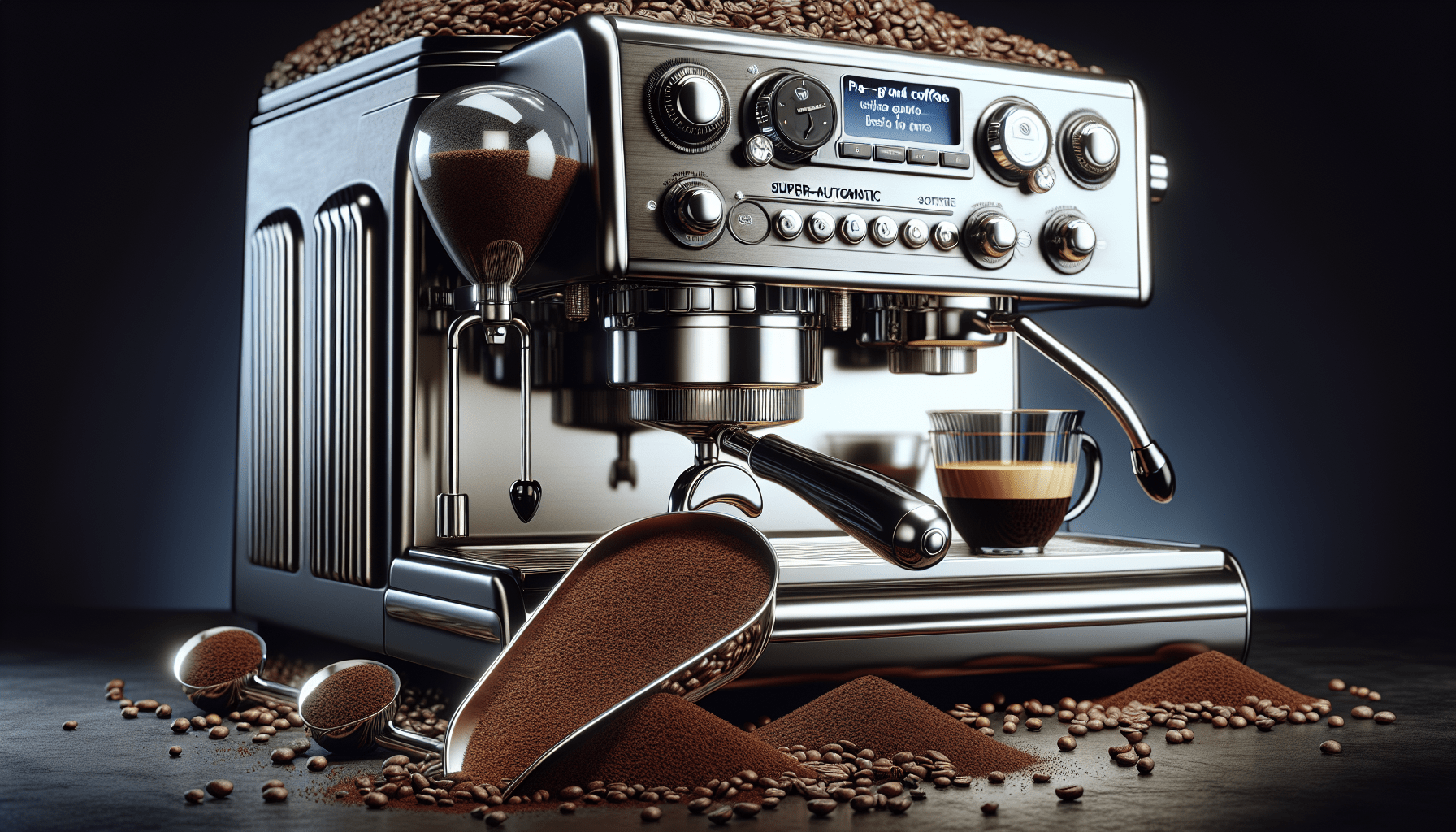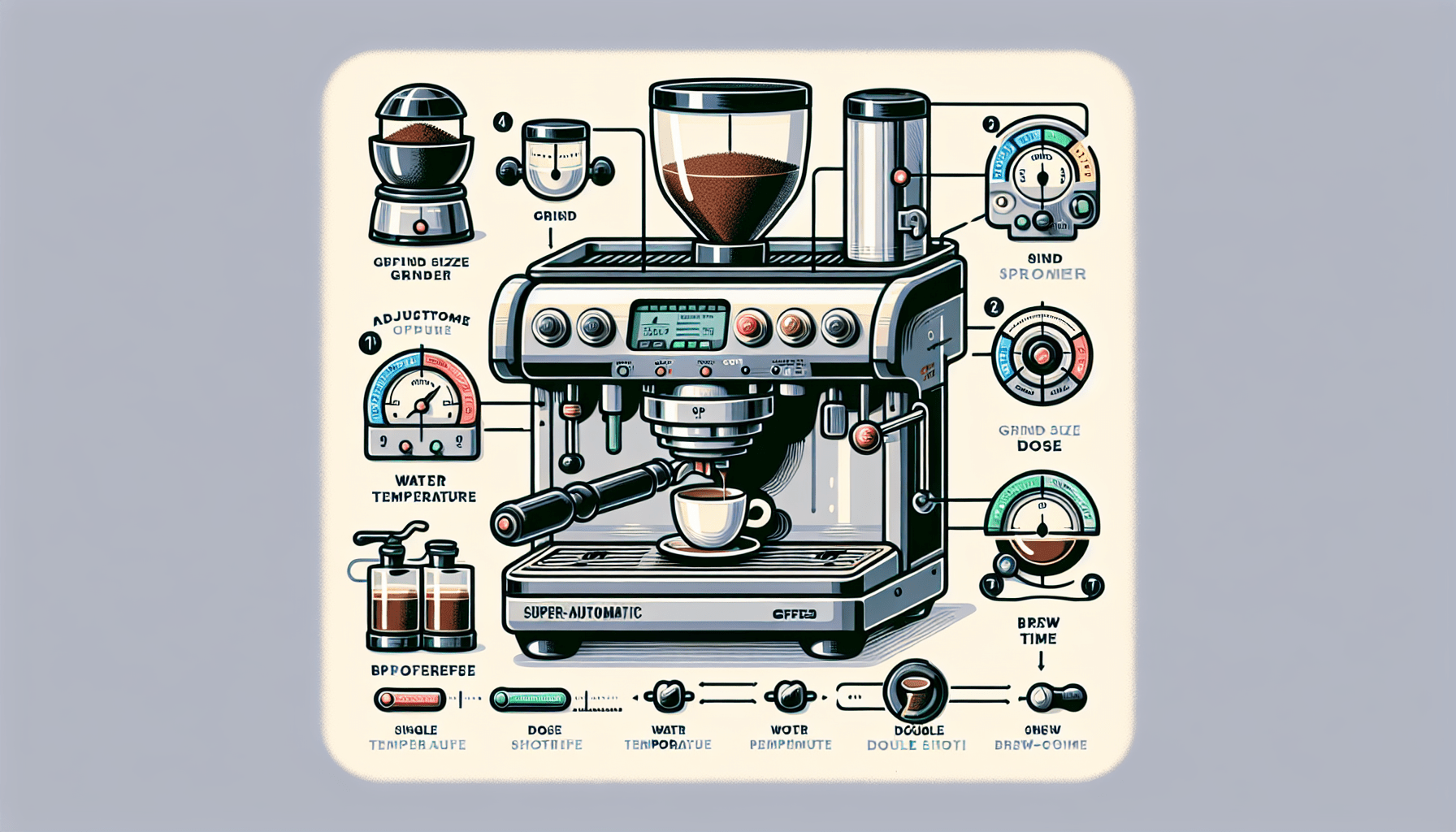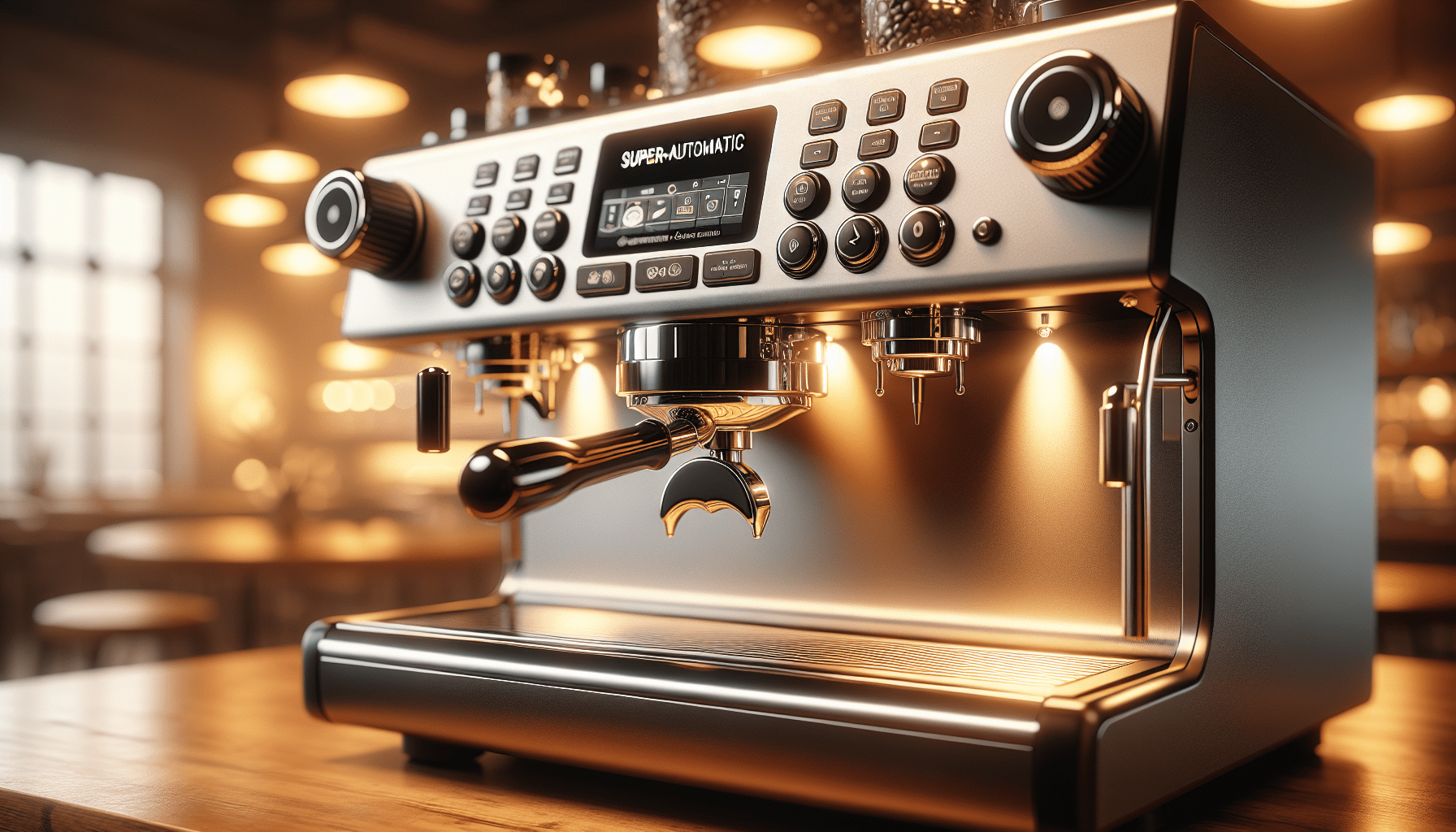If you’ve ever wondered about the magic behind the perfect cup of espresso, look no further. In this article, we’ll unravel the mystery behind the grinder in a super-automatic espresso machine. Imagine a marvel of engineering carefully crafted to transform whole coffee beans into the precious grounds that make each sip a delightfully aromatic experience. Let’s take a closer look at how this crucial component brings your espresso dreams to life.
Grinder Components
A super-automatic espresso machine comes equipped with a grinder that plays a vital role in the coffee-making process. Understanding the different components of the grinder is essential for anyone looking to get the most out of their coffee experience. Let’s dive into the key components of a grinder and how they contribute to the perfect grind.
Burr Grinder
The heart of a grinder lies in its burr, specifically designed to crush and grind coffee beans to the desired consistency. Unlike blade grinders that chop the beans unevenly, burr grinders ensure a consistent and uniform grind size. This is crucial for extracting the optimal flavors from the coffee beans, resulting in a rich and balanced cup of espresso.
Hopper
The hopper is where you pour your coffee beans for grinding. It serves as a storage container and can hold a varying amount of beans depending on the machine’s capacity. The hopper ensures that fresh beans are always readily available, contributing to the overall convenience of super-automatic espresso machines.
Grind Size Settings
Grind size determines the extraction rate and flavor profile of your espresso. Most super-automatic espresso machines offer adjustable grind size settings to cater to different brewing preferences. Whether you prefer a finer grind for a strong and intense shot or a coarser grind for a milder flavor, having control over the grind size allows you to customize your coffee experience according to your preferences.
Burr Grinder
The burr grinder, as mentioned earlier, is the core component responsible for grinding your coffee beans. It consists of two primary types of burrs: flat burrs and conical burrs.
Types of Burrs
Flat burrs are characterized by two parallel disks with teeth that crush the beans between them. This design provides a consistent grind size and is widely used in commercial espresso machines. On the other hand, conical burrs have a cone-shaped design, with one burr nested inside the other. Conical burrs are known for producing a more consistent grind, yielding a higher-quality extraction.
Grinding Mechanism
The grinding mechanism within the burr grinder involves a combination of motor, gear system, and adjustability.
Motor
The motor of a grinder is responsible for driving the burrs and crushing the coffee beans. It ensures a consistent and efficient grinding process, allowing the beans to be ground to the desired size effortlessly. A powerful motor is desirable to ensure the beans are ground quickly and consistently for optimal flavor extraction.
Gear System
The gear system within the grinder enables the burrs to rotate at the desired speed, providing the necessary force to crush the coffee beans effectively. The precision and quality of the gear system are essential for maintaining consistency in the grind, resulting in a superior espresso extraction.
Adjustability
Having the ability to adjust the grind size is a significant advantage of burr grinders. By fine-tuning the grind size settings, you have the flexibility to experiment with different brewing methods and coffee types. Whether you’re making an espresso shot, brewing a pour-over, or using a French press, the adjustability of the burr grinder allows you to achieve the perfect grind for each brewing style.
Hopper
The hopper is another vital component of the grinder that contributes to the overall convenience and functionality of a super-automatic espresso machine.
Bean Storage
The hopper serves as a reservoir for your coffee beans, allowing you to store an adequate amount for multiple brewing sessions. The capacity of the hopper varies depending on the machine, ranging from smaller hoppers ideal for personal use to larger hoppers suited for commercial settings. Having a hopper with sufficient bean storage ensures you can consistently enjoy freshly ground coffee without the need for frequent refilling.
Feeder Mechanism
The feeder mechanism is responsible for transferring the coffee beans from the hopper to the grinding chamber. It ensures a controlled and consistent flow of beans, facilitating a smooth and efficient grinding process.
Bean Storage
When it comes to bean storage within the hopper, certain factors are worth considering to maintain the freshness and quality of your coffee beans.
Capacity
The capacity of the hopper determines the number of beans it can hold at a given time. Opting for a machine with a larger hopper capacity is beneficial if you consume a higher volume of coffee or if you frequently entertain guests. However, it’s crucial to strike a balance between hopper capacity and bean usage to ensure your coffee beans remain fresh and don’t lose their flavor over time.
Sealing
To preserve the freshness of your coffee beans, the hopper should have an airtight seal. An airtight seal prevents air and moisture from seeping into the hopper, keeping your beans in optimal condition for longer periods. By maintaining the freshness of your beans, you can ensure a more flavorful and aromatic cup of espresso.
Feeder Mechanism
The feeder mechanism plays a critical role in delivering the right amount of coffee beans to the grinding chamber consistently.
Dosing
The dosing mechanism within the feeder determines the amount of coffee beans released into the grinder. This feature allows you to customize the dosage according to your preferred brewing strength and cup size. Accurately dispensing the desired amount of beans ensures a consistent taste in every cup, tailored to your personal preferences.
Consistency
Consistency is key when it comes to coffee grinding, and the feeder mechanism contributes to achieving that goal. A well-designed feeder system ensures a uniform flow of beans, eliminating any gaps or irregularities in the grinding process. By maintaining consistency in the bean delivery, you can rely on your super-automatic espresso machine to consistently produce a high-quality grind for a perfect cup of coffee every time.
Grind Size Settings
The grind size settings on a super-automatic espresso machine allow you to control the coarseness or fineness of the coffee particles, catering to your preferred brewing method and taste.
Micro-Adjustments
Micro-adjustments refer to the ability to finely tune the grind size settings in small increments. This level of precision enables you to make minute changes to the grind size, allowing for more control over the extraction and flavor profile of your espresso. Whether you prefer a slightly finer grind for a bolder flavor or a slightly coarser grind for a smoother taste, micro-adjustments offer flexibility in achieving your desired cup of coffee.
User Preferences
The grind size settings are not set in stone, as they can vary based on personal preferences and brewing methods. Super-automatic espresso machines provide a range of options, from extra fine to extra coarse, ensuring that you can find the perfect setting that suits your desired taste and brewing style. Experimenting with different grind sizes enables you to explore a wide range of flavors and tailor your coffee experience exactly as you like it.
Workflow
Understanding the workflow of a grinder within a super-automatic espresso machine is essential to maximize its efficiency and convenience.
Activation
To start the grinding process, you simply activate the grinder using the designated controls on your machine. This can be a button press, a touch screen command, or any other activation method specific to your model. Once activated, the grinder begins to crush the coffee beans, readying them for the extraction process.
Dosing Control
During the grinding process, you have full control over the dosage of the coffee beans. Depending on your machine, you can adjust the dosage to fit your desired cup size and strength preferences. This level of control ensures that you can tailor your coffee experience to achieve the perfect balance of flavors every time.
Grinding Process
As the grinder crushes the coffee beans, they are transformed into the desired grind size based on your selected settings. The consistency and precision of the grinder allow for an optimal extraction, ensuring that the flavors and aromas are fully extracted from the coffee grounds. The resulting coffee grounds are then dispensed into the designated brewing chamber, ready for the next step in the coffee-making process.
Maintenance
To keep your grinder performing optimally and ensure a consistently delicious cup of espresso, regular maintenance is essential. Here are a few maintenance tasks to keep in mind:
Cleaning
Regularly cleaning your grinder helps remove coffee residue and oils that can accumulate and affect the flavor of your espresso. Refer to your machine’s user manual for specific cleaning instructions, as different models may require different cleaning techniques. It’s advisable to clean the grinder at least once a month or more frequently if you use it heavily.
Burr Calibration
Over time, the burrs may become misaligned, resulting in an inconsistent grind. Calibration of the burrs is necessary to ensure optimal performance. Follow the manufacturer’s instructions to calibrate the burrs properly, maintaining a uniform grind size and improving the overall functionality of your grinder.
Replacement
Like any mechanical component, the grinder’s burrs may eventually wear out and need replacement. It’s important to monitor the condition of the burrs and replace them when necessary to maintain a high-quality grind and ensure the best flavor extraction from your coffee beans. Consult your machine’s manufacturer for guidance on when to replace the burrs and where to source suitable replacements.
In conclusion, understanding the various components of a super-automatic espresso machine’s grinder enhances your coffee-making experience. From the burr grinder and its types to the hopper’s bean storage and feeder mechanism, each component plays a significant role in producing a perfect grind. With the ability to adjust grind size settings and maintain regular maintenance, you can consistently enjoy flavorful and delicious espresso from the comfort of your own home.




